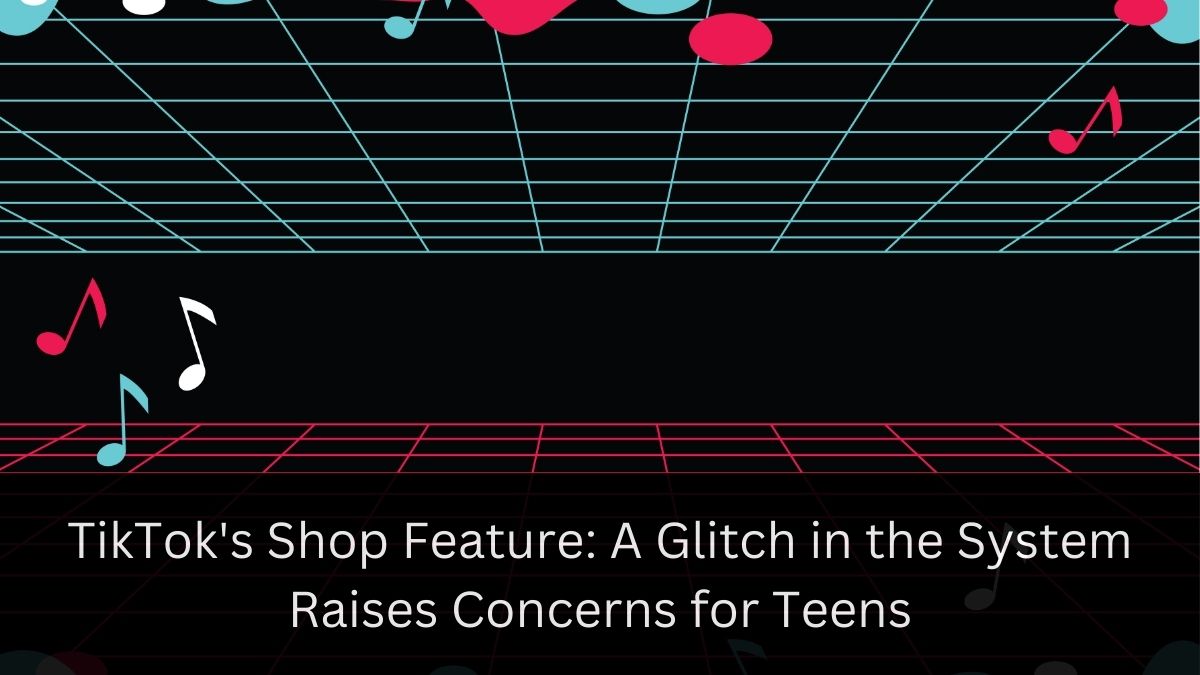Social Media
TikTok’s Shop Feature: A Glitch in the System Raises Concerns for Teens

In the ever-evolving landscape of social media, TikTok has become a powerhouse platform, captivating users with its short-form videos and trendsetting content. However, a recent discovery has raised eyebrows among parents and digital safety advocates alike. A glitch in TikTok’s system appears to be granting underage users access to the platform’s e-commerce feature, TikTok Shop, despite the company’s adults-only policy.
The Loophole: When Age Verification Falls Short
TikTok’s Shop tab, designed to be an 18+ experience, is inadvertently becoming accessible to some teens due to a peculiar oversight in the platform’s age verification process. This loophole emerges when young users initially provide false information about their age during sign-up, only to later have their accounts paired with a parent’s using TikTok’s built-in parental controls.
How the Glitch Works
- A teen creates a TikTok account, falsely claiming to be 18 or older.
- Later, due to parental intervention, the teen’s account is paired with a parent’s using Family Pairing.
- Despite this pairing process, which should signal the user’s true underage status, the Shop tab remains accessible.
This oversight raises questions about the effectiveness of TikTok’s age verification methods and the potential exposure of minors to adult-oriented content and products.
Family Pairing: A False Sense of Security?
TikTok’s Family Pairing feature is designed to give parents greater control over their children’s TikTok experience. It allows adults to manage various aspects of a teen’s account, including screen time, content choices, and privacy settings. However, the discovery of this glitch suggests that the feature may not be as comprehensive as parents believe.
The Parental Control Paradox
When a teen account is paired with a parent’s, it should theoretically signal to TikTok that the user is underage. Surprisingly, this doesn’t trigger the removal of the Shop tab, leaving parents with a false sense of security about their child’s online experience.
The Risks: Adult Content in Teen Feeds
The persistence of the Shop tab on teen accounts poses several risks. TikTok Shop, being an adult-oriented feature, may expose underage users to products and content that are inappropriate for their age group. Some items that have been spotted in the Shop include:
- Sex toys (sometimes disguised as innocent items like makeup brushes)
- Lingerie
- Hemp products and other supplements
- Weight gainers
- Vape pens
Moreover, a previous report by Business Insider highlighted TikTok’s struggles to keep banned goods out of its marketplace, further complicating the situation.
Testing the Glitch: A Real-World Scenario
To verify the existence of this loophole, TechCrunch conducted a series of tests mimicking a real-world scenario. They created a new TikTok account for a user over 18, then paired it with an adult’s account through Family Pairing, indicating it belonged to a “teen” during setup.
The results were concerning:
- The Shop tab remained visible in various configurations.
- Adjusting settings through Family Pairing did not consistently remove access to Shop.
- Enabling Restricted Mode proved to be a convoluted process, requiring app reinstallation in some cases.
These findings underscore the complexity of the issue and the challenges in implementing effective parental controls.
TikTok’s Response: Acknowledging the Oversight
When confronted with these findings, TikTok initially expressed surprise, emphasizing their policy of restricting Shop to users 18 and up. Upon further investigation, the company acknowledged that the app does not consider the age provided at sign-up when determining Shop access.
TikTok’s stance relies heavily on users providing accurate age information, which we know is not always the case with tech-savvy teens. The company points to its tools for reporting suspected underage accounts but has not addressed the core issue of the Shop tab remaining accessible to accounts under parental control.
The Bigger Picture: E-commerce and Youth Culture
This glitch comes at a time when TikTok is positioning itself as a major player in the e-commerce space. TikTok Shop has the potential to revolutionize online shopping, particularly among younger consumers. Its format, which seamlessly integrates product promotion with influencer content, creates a perfect storm for impulse buying.
As a Gen Z-friendly alternative to established e-commerce giants like Amazon and emerging players like Temu, TikTok Shop’s appeal to younger shoppers is undeniable. This makes the age verification issue all the more critical to address.
Looking Forward: The Need for Robust Safeguards
The discovery of this loophole serves as a wake-up call for both TikTok and parents. It highlights the need for more robust age verification processes and comprehensive parental controls in social media platforms, especially those with e-commerce features.
As we navigate the intersection of social media, e-commerce, and youth culture, it’s crucial that platforms like TikTok prioritize the safety and well-being of their youngest users. This may require rethinking age verification methods, improving the integration of parental controls, and perhaps even reconsidering the placement of e-commerce features within apps popular among teens.
In the meantime, parents should remain vigilant, regularly checking their children’s TikTok settings and having open conversations about online safety and responsible social media use. After all, in the rapidly evolving digital landscape, staying informed and proactive is our best defense against unexpected glitches in the system.
